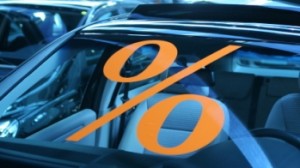Say you’ve just spotted that new car you always wanted, however it’s currently out of reach beyond your budget. In an effort to sweeten the deal, and get you across the line, the dealer offers an interest free loan. This must be your lucky day, right!? I mean, who wouldn’t want to save themselves thousands of dollars in interest costs? It all sounds like a bargain, but are things really as they seem?
While a growing number of car manufacturers offer interest free deals through their dealerships, that’s not indicative of the deal’s popularity. The reality is, in many instances, an arrangement like this will end up costing you more. You might ask, “How will I be worse off?”. Well, as a form of sub-vented finance, the dealer will be paying interest on your behalf to the financier. If you haven’t connected the dots together already, let’s spell it out clearly – dealers would be remiss to their employers if they didn’t try to recoup these lost earnings.

Take for example, the price of your shiny new car. A 0% interest loan is usually based on the full (retail) price of the vehicle. In cases where there is some movement, it’s still within a limited range. Instead, if one was able to negotiate the sale price of the vehicle and bring the price down, it’s very likely that you would save more money – depending of course, on your ability to make the repayments. In August last year, News.com.au published findings that indicated a Nissan Pulsar was $2,541 cheaper across three years when purchased with a regular loan at 8%, with interest payments offset by a $5,000 difference in the vehicle’s purchase price ($19,990 vs $24,990 when bought with 0% finance). Make certain that you enter the dealership with knowledge of the vehicle’s ‘going’ market value, and how much you can buy it elsewhere.
You’ll also need to remain wary of the terms associated with an interest free loan. There is often reduced scope for flexibility. As such, you should repay all the loan within the interest free period – often three years, at which point a balloon option might become available. The balloon option is one method of reducing interim repayments. However, it required a large lump sum to be paid at the end of the deal. This may require further financing, at a less than desirable rate. Keep an eye out for any references to the deposit sum, which could be significantly higher than normal to ensure interest payments made by the dealer on your behalf are minimised.

Don’t forget, if you’re thinking about trading in a vehicle to offset the new purchase, it’s likely your vehicle will be undervalued. Doing this, the dealer can attract a higher margin on the resale of your trade-in. It goes without saying that you should undertake appraisals on your vehicle’s trade-in value. There are even some instances where dealers will ‘guarantee’ a specific trade-in value in the future when you look to upgrade again. What this does however, is locks you in with that dealer and reduces your negotiating power.
Interest free finance campaigns are intended to boost foot traffic through dealerships. Then, the ‘hard sell’ begins. It’s an effective form of marketing for dealers and manufacturers because they can apply different sales strategies to customers who qualify and those who don’t. Ultimately though, just because it’s available, that doesn’t mean it suits the needs of all customers equally.
The Fincar team is here to help you with all your financing needs. Contact us today to help arrange your next car or equipment loan.
